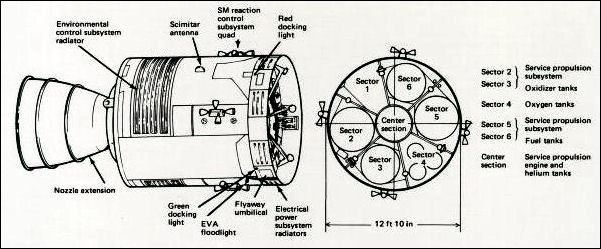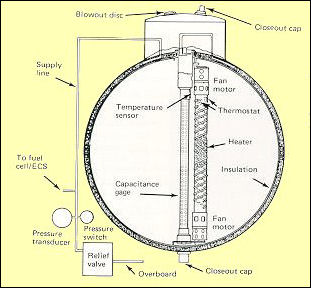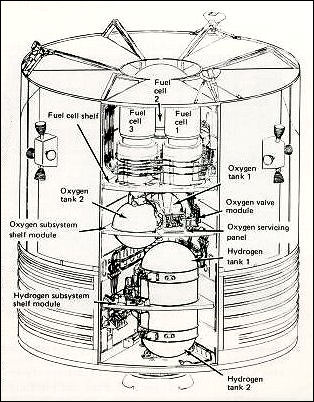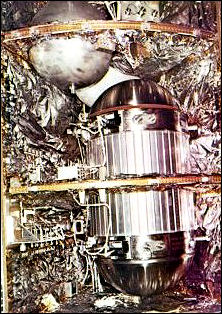
|
| "There's one whole side of that spacecraft missing," said Lovell in astonishment. About five hours before splashdown the service module was jettisoned in a manner that would permit the astronauts to assess its condition. Until then, nobody realized the extent of the damage. |







